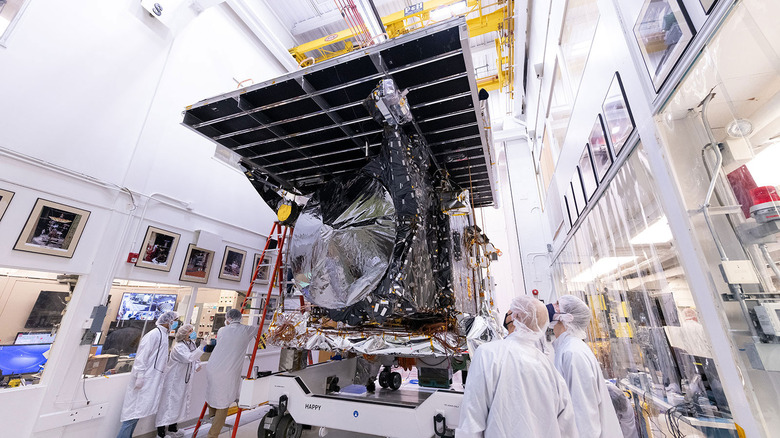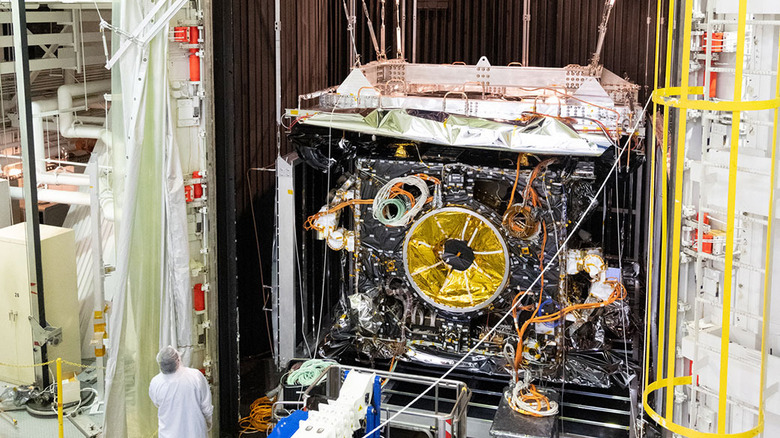Why NASA's Psyche Spacecraft Is Being Shaken Up And Baked
NASA's Psyche spacecraft is getting ready to visit a strange metal asteroid, with a launch scheduled for later this summer. To prepare the spacecraft for the extreme conditions of a launch and space journey, it is being put through testing to ensure it's up for the job – and that involves shaking it, baking it, and freezing it.
Spacecraft need to face difficult challenges, particularly during launch. As a rocket fires, it vibrates the entire spacecraft which could shake loose any fixtures that aren't well secured or could even break some delicate parts. That's not to mention the light, heat, and radiation from the sun which becomes more intense as it rises through the Earth's atmosphere, or the eventual deep cold of space once the craft leaves Earth and heads out into the solar system.
To make sure a space mission is ready for these challenges, NASA's Jet Propulsion Laboratory (JPL) puts its spacecraft through a series of rigorous tests at its facilities in California. The Psyche spacecraft has just passed its tests, confirming that it's ready to face space, according to JPL.
"This is the proof that everybody's done their job right. Not only those who have brought flight hardware into assembly, test, and launch operations [ATLO] but also the ATLO team in putting it all together," said JPL's Psyche dynamics testing engineer Randy Lindemann. "The tests show that, yes, the spacecraft is flight worthy."
Testing a spacecraft to the extremes
The testing process includes shaking the spacecraft in what is called vibration testing when it is put on a special vibrating table that shakes the craft both up and down and side to side. Then there's shock testing, which tests whether the craft can survive the jolt when it disconnects from the rocket, and acoustic testing where it's subjected to the acoustic loads it will undergo during launch, as well (via Psyche).
Some of the biggest challenges for any spacecraft, though, are temperature variations. That's because the spacecraft will not only get very hot during launch or when parts of it are facing the sun, but also very cold when it's deep in space and passing through a shadow. So JPL rolls the spacecraft into an enormous vacuum chamber 85 feet tall for a procedure called thermal-vacuum (TVAC) testing. The air is removed from the chamber to test whether the spacecraft can heat and cool without air passing over it.
"Here on Earth, when you have air around the spacecraft, that changes how heat moves around it. Picture having a fan blowing on you that changes your temperature. In space, we don't have that kind of heat movement," said JPL flight systems engineer Kristina Hogstrom.
Psyche went through 18 days of testing in the vacuum chamber, including being subjected to the hottest and coldest temperatures that it is expected to encounter during its mission. With all the testing complete, the spacecraft will now be shipped to NASA's Kennedy Space Center in Florida where it is scheduled to launch on August 1.

